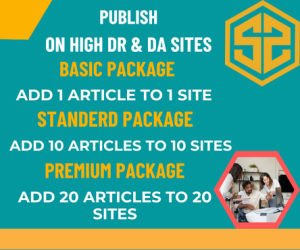In the digital age, where information is just a click away, the speed of your law practice’s website can significantly influence your online performance. As potential clients search for legal services, they expect quick access to information. A slow-loading website can lead to frustration, causing visitors to abandon your site and seek services elsewhere. This article explores how website speed affects your law practice’s online performance and offers strategies to enhance it. Visit now Lawyer Website Design
The Importance of Website Speed
First Impressions Matter
When potential clients land on your website, they form an opinion within seconds. A fast-loading site creates a positive first impression, signaling professionalism and efficiency. Conversely, a slow website can lead to negative perceptions about your law practice, making visitors question your competence and reliability.
User Experience and Engagement
Website speed directly impacts user experience. Research shows that users are more likely to engage with a site that loads quickly. If your website takes longer than three seconds to load, you risk losing a significant portion of your audience. High bounce rates—when visitors leave your site without interacting—can harm your online reputation and reduce the chances of converting visitors into clients.
A fast website encourages users to explore more pages, increasing the likelihood of them contacting your firm or filling out a consultation form. The longer visitors stay on your site, the more opportunities you have to showcase your expertise and services.
Search Engine Optimization (SEO)
Website speed is a critical factor in search engine optimization. Google has made it clear that page speed is a ranking factor in its search algorithms. Faster websites tend to rank higher in search results, which can lead to increased visibility and organic traffic.
Moreover, Google’s Core Web Vitals, which include metrics like Largest Contentful Paint (LCP) and Cumulative Layout Shift (CLS), assess how users experience your website. Optimizing these metrics not only improves user experience but also enhances your search engine rankings.
Strategies for Improving Website Speed
1. Optimize Images
Images are often the largest files on a website, and unoptimized images can significantly slow down load times. Use image compression tools to reduce file sizes without sacrificing quality. Formats like WebP can also help improve loading times while maintaining visual fidelity.
2. Leverage Browser Caching
Browser caching allows frequently accessed data to be stored on a user’s device, enabling faster load times for returning visitors. By setting up caching rules, you can reduce the amount of data that needs to be loaded each time a user visits your site.
3. Minimize HTTP Requests
Every element on your webpage—images, scripts, stylesheets—requires an HTTP request. Reducing the number of elements on your pages can decrease load times. Combine CSS and JavaScript files where possible, and eliminate unnecessary plugins that may slow down your site.
4. Use a Content Delivery Network (CDN)
A CDN distributes your website’s content across multiple servers worldwide, ensuring that users can access your site from the server closest to them. This reduces latency and improves load times, especially for visitors located far from your primary server.
5. Optimize Your Code
Clean and efficient code can significantly improve website speed. Minify CSS, JavaScript, and HTML files to remove unnecessary characters and spaces. This reduces file sizes and speeds up loading times.
6. Choose a Reliable Hosting Provider
The quality of your web hosting can greatly affect your website’s speed. Opt for a reputable hosting provider that offers fast servers and excellent uptime. Consider managed hosting solutions that are optimized for speed and performance.
Regular Performance Testing
Utilize Speed Testing Tools
Regularly test your website’s speed using tools like Google PageSpeed Insights, GTmetrix, or Pingdom. These tools provide valuable insights into your site’s performance and highlight areas for improvement.
Monitor Core Web Vitals
Keep track of your Core Web Vitals to ensure your site meets Google’s performance standards. Regular monitoring allows you to identify and address issues before they impact user experience and search rankings.
Conclusion
In conclusion, website speed is a crucial element of your law practice’s online strategy. A fast-loading website enhances user experience, improves search engine rankings, and ultimately leads to more client conversions. By prioritizing website speed optimization, you can ensure that your law practice remains competitive in the digital landscape. Investing time and resources into improving your website’s speed is not just a technical necessity; it is a strategic move that can significantly impact your practice’s success.
By implementing the strategies outlined in this article, you can create a more efficient, user-friendly website that attracts and retains clients, ultimately driving growth for your law practice.

